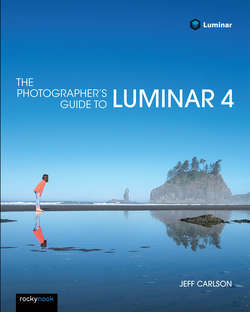Читать книгу The Photographer's Guide to Luminar 4 - Jeff Carlson - Страница 33
На сайте Литреса книга снята с продажи.
Edit in Luminar 4
ОглавлениеThe other approach gives you more options, but also more variables to pay attention to. If you’ve already done some editing in Lightroom, this is the route that keeps the results of those edits:
1 1. Choose Photo > Edit In > Luminar 4. You can also choose the same item from the contextual menu when you right-click the image.(On macOS as I write this, choosing Photo > Edit In > Edit In Luminar 4 opens the file in Luminar as a single-image edit, without an Apply button. That prevents the edits from being returned to Lightroom. The same option in Luminar for Windows works as expected. So, if you’re using the Mac version, be sure to select the “Luminar 4” option, not the “Edit in Luminar 4” option that Lightroom adds near the top of the menu.)
2 2. Choose the type of file that gets sent to Luminar (Figure 2-8). If you’ve already applied edits in Lightroom, choose the first option, Edit a Copy with Lightroom Adjustments. This is also the only choice if you’re working with a raw or DNG image.If it’s a JPEG image, you can also opt for Edit a Copy, which passes along an unedited copy of the original file. This option is good when you want to perform similar edits in Lightroom Classic and Luminar and see which you prefer. I don’t recommend the third option, Edit Original, because it adjusts the image file itself without making a copy.For now, ignore the Copy File Options at the bottom of the screen. They require a bit more explanation, which we’ll get to on the next page.
FIGURE 2-8: Choose from the Edit In options.
1 3. Click the Edit button to continue. Lightroom creates a separate file and opens it in Luminar in its plug-in mode, and Apply and Cancel buttons appear in the toolbar.
2 4. Make your edits, and then click Apply. The new version is saved and added to Lightroom’s library, grouped with the original as a stack.
